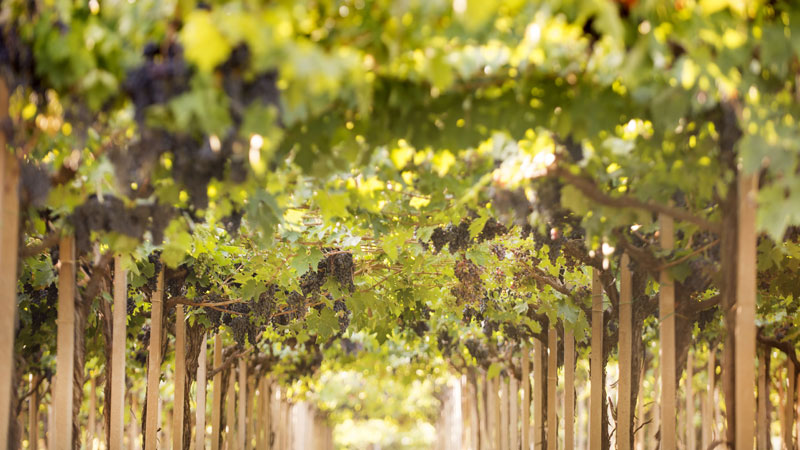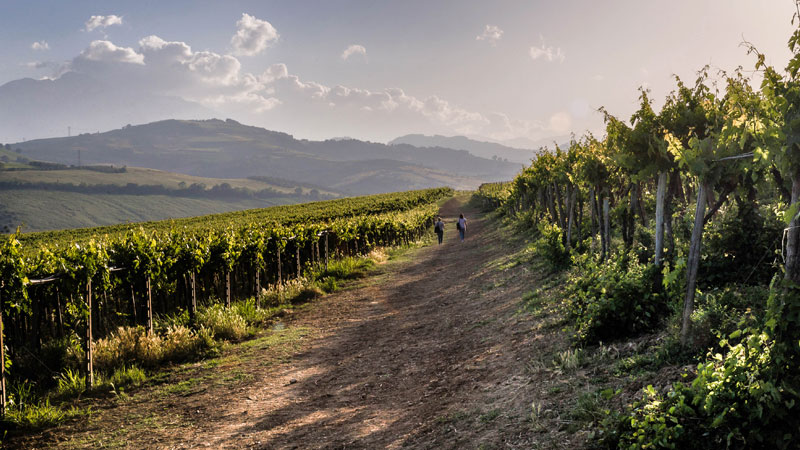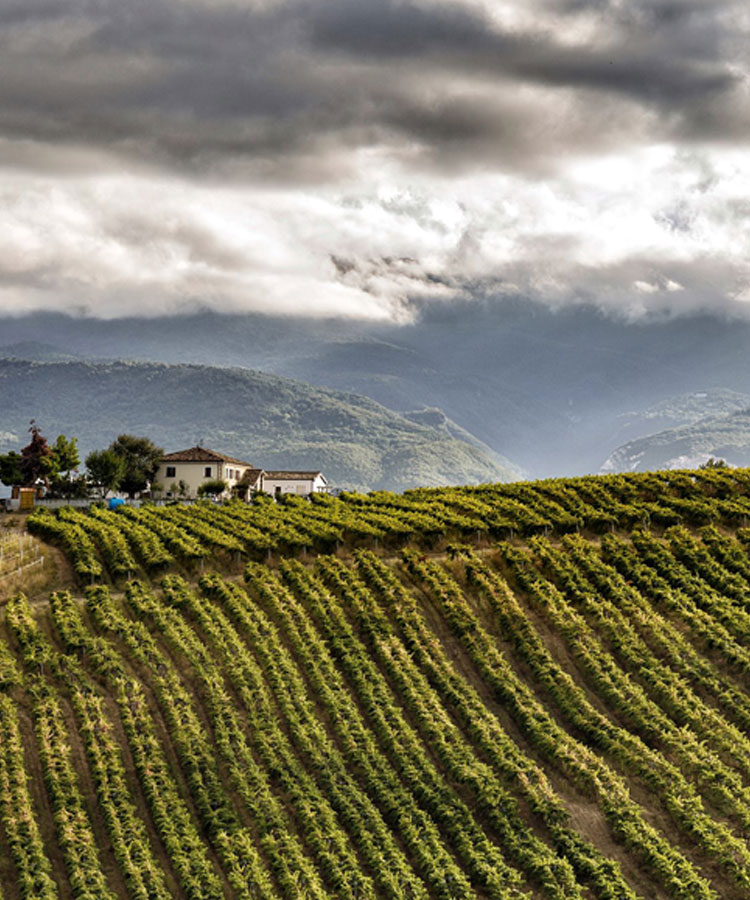
In 2018, Montepulciano d’Abruzzo celebrated half a century of DOC recognition. The beloved style of red from the center of Italy has long solidified its status as one of the country’s enduring viticultural touchstones. For good reason: Winemaking here traces its roots back to ancient times — a local tradition dating back to the Roman Empire.
But despite this legacy, American wine drinkers have a lot to learn about the region. Occupying rugged and dynamic terrain between the craggy peaks of the Apennines and the breezy shores of the Adriatic, these grapes have a lot to say. Take a taste and have a listen.
COMMITMENT TO TASTE AND HOSPITALITY
“I love that Abruzzo is an underdog,” says Joe Campanale, winemaker, sommelier, and owner of Fausto, a celebrated Italian restaurant in Brooklyn. “When you try one of the wines … you easily realize that it’s possible to create distinctive and terroir-driven wines here.” Beyond the accessible reds of the legendary Montepulciano, wines typically include vivacious whites from grapes like Trebbiano and Pecorino.
“I’m mostly looking at a flavor profile of dark red fruits, black pepper, and a bit of earthiness,” observes Catherine Morel, lead sommelier at 71Above in Los Angeles. “They pair well with pasta and red sauce — spaghetti alla chitarra is a regional dish — lamb, and pizza. So what’s not to love about that!?” She’s equally as enthusiastic pairing Trebbiano d’Abruzzo with simple pasta dishes — gnocchi with a light cheese, or alongside steamed mussels.

THE BEAUTY OF THE COUNTRYSIDE
The heart of production lies in Chieti, a province and city with over 3,500 years of visible history. Its centro storico (old town) is peppered with gothic towers and medieval ruins. It is blessed with natives whose fierce dedication to preserving the past is rivaled only by their commitment to hospitality. “I find the people to be warm and welcoming and excited to share the bounty of their land,” Campanale observes. “I also find it incredible that you don’t see more tourists in Abruzzo, considering its beauty and how close it is to Rome (just over 2 hours by car or train).”
If you can’t make the trek, a bottle of Montepulciano d’Abruzzo is, of course, a sensible and economical alternative. It isn’t difficult to find, either. Of the immense 800,000 hectoliters produced annually — one of Italy’s top DOCs by volume — just over 10 percent of it makes its way to the U.S. Within all those bottles is a property waiting to be uncorked.
“Since I spend a lot of time in Abruzzo, drinking a wine from the region stateside always makes me think of the great times I’ve had there with my friends and just how stunningly beautiful a place like Abruzzo is,” notes Campanale. It is a difficult assessment to dispute. Rising up from the charming seaside settlements is a mountainous landscape, crescendoing in Gran Sasso. The 9,554-foot massif marks the high point of the Apennines mountain range and the dramatic centerpiece of a 778-square-mile national park.
DYNAMIC TOPOGRAPHY, VIVACIOUS VARIETALS
In addition to a postcard-worthy panorama, this dynamic topography delivers distinction to the grapes grown far below. Most vineyards are situated on hillsides, climbing to 2,000 feet in elevation, employing a tendone system to help regulate yield. Warm air carries up from the Adriatic by morning, encouraging a robust diurnal temperature swing, enabling wondrous notes to develop on the vine.

Although the region remains unflinchingly loyal to its trademark varietals, notable producers are introducing innovation by way of modernized techniques. Morel describes the natural winemaking process as “biodynamic, hand-harvested, unrefined/unfiltered, no sulfur. Not inexpensive, by any means, but so, so worth it.”
Other producers are having fun exploring the potential of Pecorino. The indigenous varietal (not to be confused with the Italian sheeps milk cheese of the same name) gives birth to wines deep in texture yet light in body. Campanale enjoys pairing his against vegetable-based appetizers such as sunchokes with hazelnuts or roasted heirloom carrots under goat cheese.
THE FUTURE OF ABRUZZO
Proud of its storied past, Abruzzo is nonetheless demonstrating vision for its future. In 2010 it established Cerasuolo d’Abruzzo, Italy’s first controlled designation for a rosé wine. As of 2018, all varietals from the region now bear an identification seal on the bottle insuring quality and certifying the stature of the juice within. The area is also courting tourism as never before. “Itineraries – Abruzzo between wine and culture” is an online platform where prospective visitors can tailor a journey specific to their travel preferences.
Whether on the road, or in the glass, wine here is a treasure to behold; a tale aged beautifully through time.
This article is sponsored by Vini d’Abruzzo.


